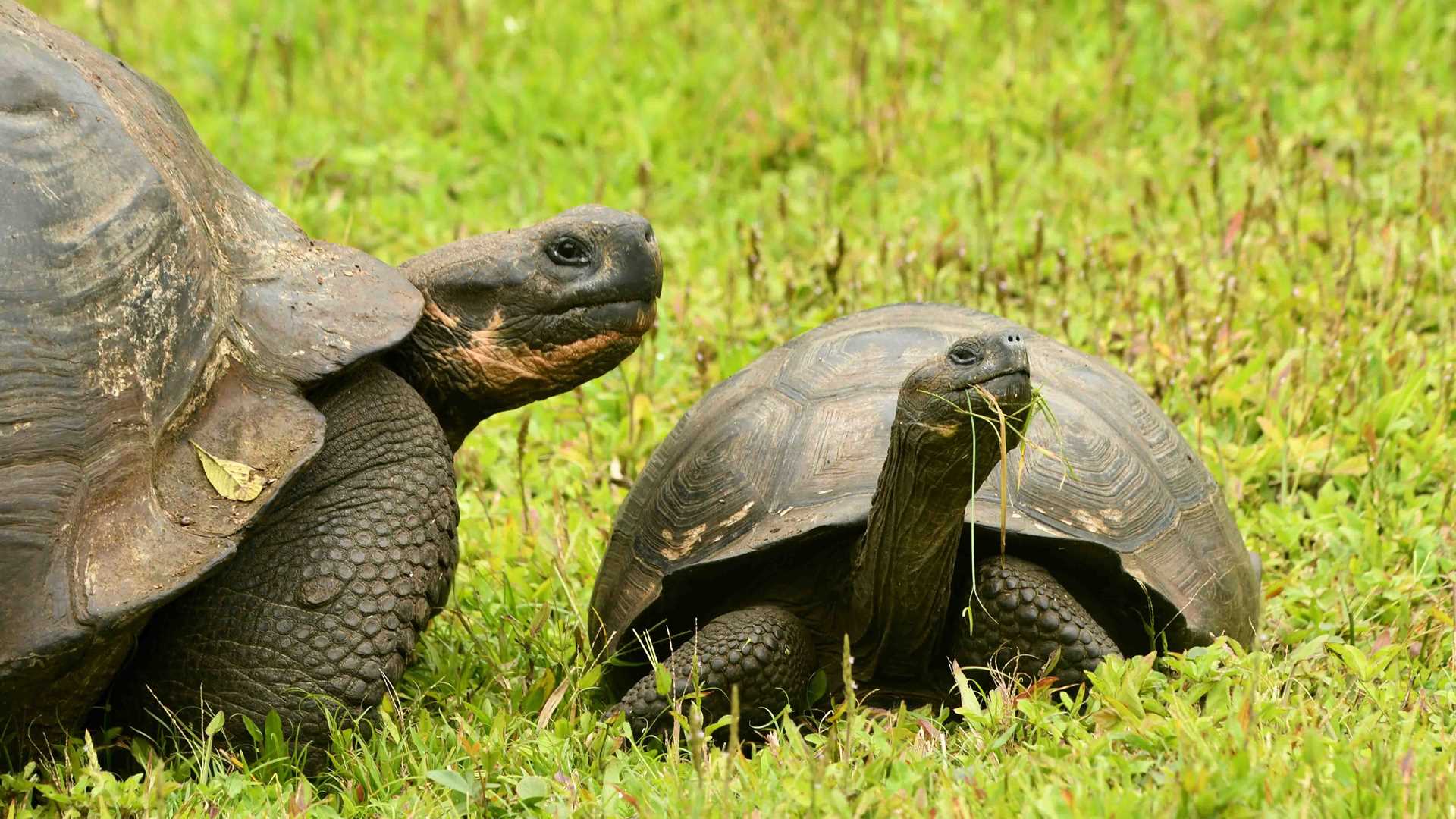Early in the morning we anchored at the north side of Santa Cruz. It is the second biggest island, one of the five inhabited ones and the economic hub of Galapagos.
Today we have the opportunity of exploring the highlands, which is home for the most iconic creature that you find in this remote place, the Galapagos giant tortoises. These humongous reptiles prefer to stay at the top of the mountains, where is very wet and green and water from the rain or the early dew is vital for them to survive.
We took buses to get us to the visitor sites, stopping first at Los Gemelos, two pit craters on the side of the main road. These are geological formations created by the main volcano more than a million years ago, when this island had volcanic activity. The place is very lush and houses a wide variety of land birds, such as Darwin finches, mockingbirds, flycatchers, warblers, and more.
Afterwards, we passed by several small villages where some farmers live. This area has good fertile soil and you can plant many crops, such as bananas, plantains, papayas, oranges, yucca, and much more. One of the best products in Galapagos is its organic coffee that some of our guests bought in a little shop at the ranch we visited to observe the giant tortoises in their wild habitat.
We arrived at El Manzanillo ranch, which is in the transition zone, the ecosystem these reptiles prefer. We walked around to explore the territory and we had glorious moments with these astonishing and prehistoric creatures. We found huge male tortoises cooling off in fresh water ponds, while juveniles grazed on vegetation nearby.







